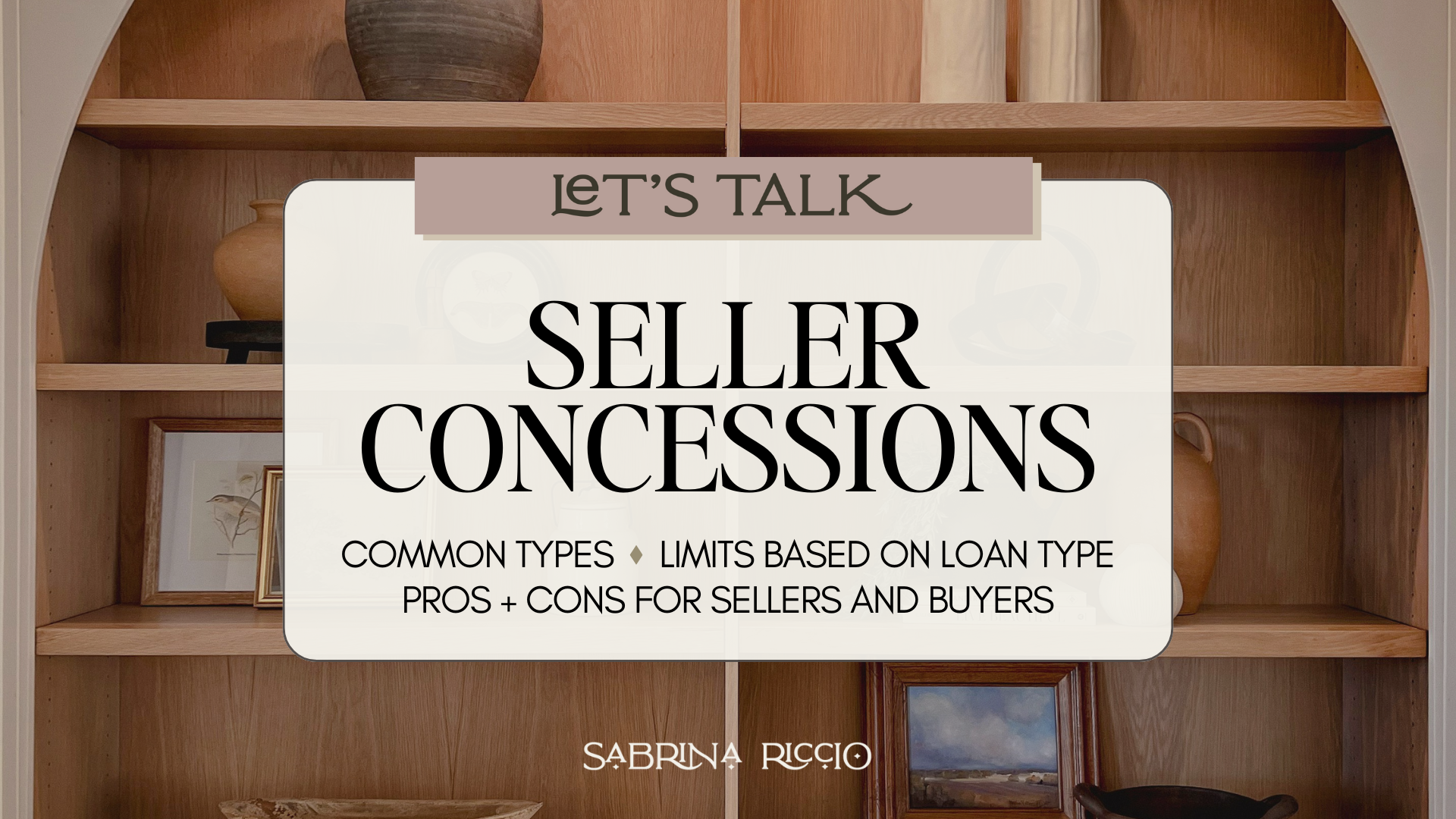When it comes to selling or buying a home, negotiating smart strategies can make all the difference in a successful deal. One of the most powerful tools in the real estate playbook? Seller concessions.
So, what are they & how do they impact buyers and sellers, alike?
Whether you’re selling in a competitive market or buying your first home, understanding how seller concessions in real estate work can help both parties walk away with a win. Below, I’m breaking down what seller concessions are, how they benefit buyers and sellers, and what you need to know depending on your loan type.

What Are Seller Concessions?
In real estate, seller concessions are financial incentives or contributions a seller offers to the buyer to help complete the transaction. These concessions typically go toward covering some of the buyer’s closing costs or other upfront expenses, ultimately making the home more affordable for the buyer.
They’re especially helpful in:
- Buyer’s markets (where inventory is high and sellers need to stand out)
- Deals where the buyer needs extra financial help to close
- Homes needing repairs or upgrades
Example Scenario
Let’s say you’re selling your home for $400,000. The buyer asks for $10,000 in seller concessions to help cover closing costs. You, the seller, agree — contributing $10,000 at closing. That means the buyer brings $10,000 less in cash to the table, helping them afford the purchase more easily.

Common Types of Seller Concessions
There are several ways a seller can offer financial help. Here are the most common types:
1. Closing Cost Assistance
The seller helps pay a portion (or all) of the buyer’s closing costs, which might include:
- Title insurance
- Appraisal and inspection fees
- Attorney or escrow fees
- Loan origination charges
2. Repairs or Improvements
If issues show up during the home inspection, a seller may:
- Pay for repairs upfront
- Offer a credit at closing so the buyer can handle the repairs post-sale
3. Rate Buydowns
Sellers can pay to “buy down” the buyer’s mortgage rate, reducing their monthly payments — a valuable option in high-interest environments.
4. Paying for Points
Similar to a rate buydown, discount points are prepaid interest. The seller covers these points to lower the buyer’s rate.
5. HOA Fees or Prepaid Items
Sellers can help cover upfront costs like:
- Homeowners Association (HOA) fees
- Prepaid property taxes or insurance

Pros and Cons of Seller Concessions
For Sellers
✔ Pros
✖ Cons
Attracts more buyers, especially when the market is slow and can speed up the sales process
Reduces your net profit
Helps you stand out among competing listings
May signal to buyers that the home needs incentives to sell
For Buyers
✔ Pros
✖ Cons
Reduces out-of-pocket expenses
The seller might raise the price to offset concessions
Makes qualifying for a mortgage easier by lowering upfront costs
Can limit your negotiation power in other areas (like requesting repairs)

Limits Based on Loan Type
Before negotiating seller concessions in real estate, it’s important to know that loan programs have limits on how much a seller can contribute:
Loan Type
Max Seller Contribution
FHA Loan
Up to 6% of the loan amount
Conventional
3–9%, depending on the down payment
VA Loan
Up to 4% of the loan amount
Understanding these limits can help set clear expectations and prevent any financing issues during escrow.

Want to Learn More About Seller Concessions?
Whether you’re buying, selling, or simply preparing for your next move, knowing how to navigate seller concessions can help you move forward with confidence and clarity.
✨ Let’s talk strategy.
I’d love to walk you through how seller concessions could benefit your specific situation — and help you make empowered, strategic decisions in today’s market.


leave a comment
return to post index